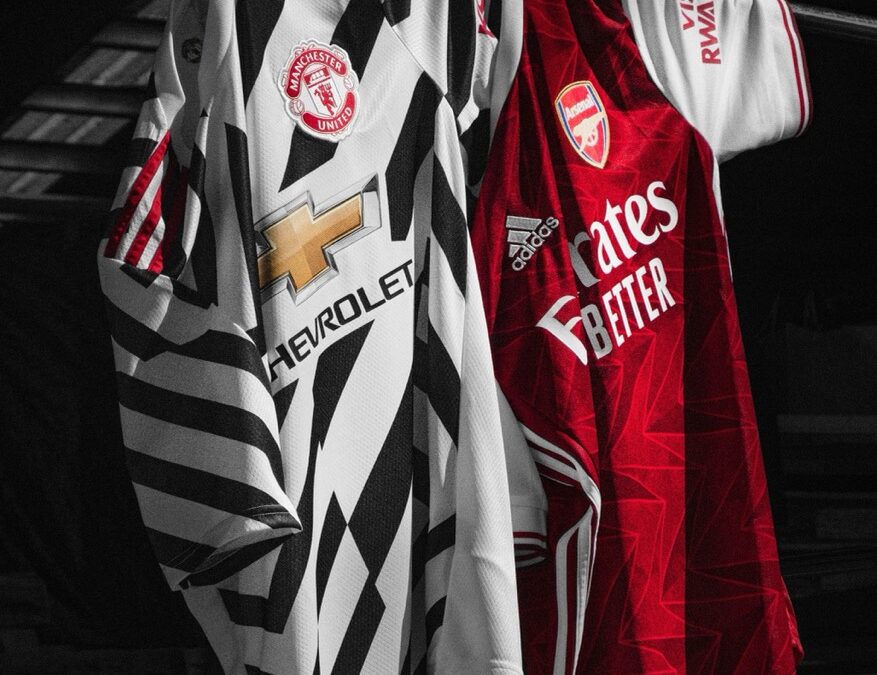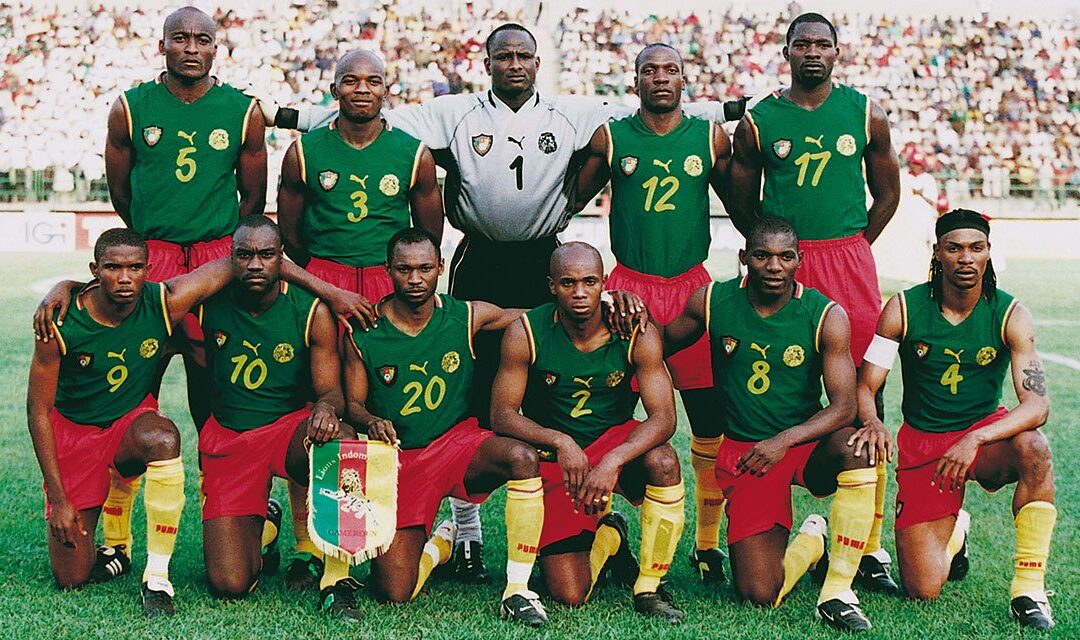Anyone that calls themselves a football shirt enthusiast owns at least one vintage kit.
Whether it’s Arsenal’s ‘bruised banana’ shirt, the Dutch 1988 kit with its eye-catching orange triangular design, or Inter Milan’s infamous Pirelli sponsor which has been the symbol of the Nerazzurri since 1995 – vintage kits aren’t just a trend, they’re a cornerstone of football culture.
But why? Never before has so much money been put into making and designing football shirts, and yet many modern kits still use designs that hark back to vintage eras like the 80s and 90s. Were the designs of old really that much better? Or is everyone just a big old nostalgia merchant, looking at the past through bright orange, high-collared tinted glasses?
Vintage shirts haven’t just endured – they’ve dominated. The growth of online platforms such as ‘Classic Football Shirts’ is representative of that, as an archive of history’s best shirts for enthusiasts to purchase. Similarly, social media channels dedicated to collecting football shirts have risen in popularity. One of these channels is YouTuber Jay Tomlins, who’s channel JTFC is a celebration of football shirt culture.
“I think vintage shirts have an authenticity that a lot of modern kits just can’t replicate. They’re tied to specific moments in football history, like Maradona at Napoli, Cantona popping his collar for United, that sort of thing. And of course the designs – shirts from the ’80s and ’90s had these colourful bold patterns, and it was like the manufacturer had this freedom where they could be as creative as they liked. I feel like with modern kits people think they’re too corporate and contrived to make money, so even if they come up with a nice new sleek design it doesn’t come across as authentic to fans compared to how an older shirt would.
There’s also iconic sponsors that stand out like Pirelli at Inter, and some weird ones like the famous 7up sponsor on an old Fiorentina shirt, and Atletico Madrid did a partnership with Spiderman so they had that logo on their shirt for one season. They weren’t afraid to take risks, and that resonates with people who want something unique, and not like a lot of modern kits which seem like templates sometimes.”
It’s true that manufacturers in the ’80s and ’90s had more creative freedom when it came to designing kits. Back then, kit deals were smaller, and the industry was not as heavily commercialized as it is today. This freedom allowed manufacturers to take risks with the sort of innovative designs that Jay mentions, as well as the unique sponsorship deals like Fiorentina’s Nintendo deal and Lazio’s Del Monte logo in 1994.
Take Manchester United’s infamous grey away kit in 1996, which was allegedly “invisible” to players on the pitch, or Juventus’ pink shirt from 1992 that turned heads long before pink became a fashion trend. Kits were experiments – sometimes they flopped, but when they hit, they became timeless to fans.
By contrast, brands nowadays often create generic templates to use across multiple teams, tweaking only the colors and crests for different clubs. This is why modern retro-inspired kits often outperform new designs.
“Nostalgia is definitely a huge part of it though.” Jay said. “We all look back fondly on the era of football we grew up with and the players that we watched on TV growing up, and as a result we remember the shirts they wore. People see a retro kit and it instantly reminds them of a specific memory – like watching their first game or their favorite player back in the day.
But I wouldn’t say it’s just nostalgia. The designs hold up. People who didn’t even watch football in the ’90s are still buying those shirts because they genuinely look good. In fact a lot of people who weren’t even born back then are still obsessed with that style of kit, so in those cases it can’t be nostalgia, so that says a lot about the uniqueness of the design.”
Football shirts are making more of an appearance in general retro clothing stores now as well. Adam Mann, the owner of Rock Retro, an independent vintage shop in Lincoln, believes the appeal for vintage footy shirts extends beyond just football fans. “People who don’t even like football will come in and end up buying a football shirt because they love the vintage style of them. It’s the patterns and colors they have, and then I think it’s a cultural thing now, people think it’s cool to wear vintage football shirts.
For people that are into that kind of style with their fashion anyway, it suits them because it also has the slightly oversized fit that they like. There’s something in the randomness of it as well, it’s cool. You’ll see young people walking around in a 1995 Parma kit and some cargos. It’s strange but I think it’s amazing to be honest.”
This crossover into mainstream fashion has also led to a surge in value for vintage shirts. While people may hunt for bargains at second-hand shops, the reality is that demand is driving up prices. For example, the Dutch 1988 shirt mentioned earlier will cost you about £750 for an authentic original. Napoli’s 1990/91 kit is listed for north of £500, due to the association with Diego Maradona and the Mars sponsorship logo.
Adam said: “The highest priced shirt I have available at the minute is a Liverpool Crown Paints shirt, 1982/85 for £150. As a Liverpool fan, it’s a beauty and I think I secretly want to hold onto it! The sponsor’s iconic as well and a lot of people ask me about it.”
Clubs themselves have started capitalizing on this enthusiasm. Many are re-releasing vintage- inspired shirts, often marketed under the label of ‘legacy’ or ‘retro’. After the death of Diego Maradona in 2020, Napoli released not one but two special kits to honour him as a club legend, both of which were available to buy at a premium price. This divided opinion, as many thought the idea to represent Maradona on a shirt was great, and executed well, however some accused Napoli of capitalising on his passing in order to flog more ‘limited edition’ shirts for a higher price. For many, this represented the way in which modern clubs and organisations will try to use the nostalgia of past kits, teams and players to sell modern items more effectively, without creating new and innovative designs with the same freedom and authenticity that the original vintages had.
However, newer releases that reference older classics but give them a modern refresh, are often received well. This season’s Lincoln City home shirt, for example, was clearly inspired by the club’s 1984/85 kit, with a red foreground and white sleeves, and contrasting white and red pinstripes going vertically along the shirt.
Gary Hutchinson, who runs the popular Lincoln City fan social media page ‘Stacey West Blog’, described how fans enjoyed the vintage references of the design, but were taken aback by the likeness to a retro kit the club had released just weeks earlier:
“With kits, the club is always trying to do something traditional, classic and something that preserves the club’s heritage. We’re trying to stay connected with our identity, which is the reason for the shirt being as it is. However, it’s almost identical to the retro one that was released recently. Loads of people have got it, they liked the shirt and bought the retro one – I’ve seen it around the ground loads. If you have that retro shirt, are you going to think: ‘I’ll buy this one now as well’? Because the differences are so subtle I think, for it to not feel like a different shirt. My first thought when I saw it was that they’d rebadged the retro shirt.”
This outlines the risk of overdoing vintage designs. Even a design deeply rooted in a club’s history must strike a delicate balance between homage and originality to captivate modern audiences, without seeming to abuse nostalgia and vintageness to take more money from its own fans.
What’s clear is that vintage kits aren’t going anywhere. Whether they’re proudly worn as a statement of loyalty or adopted into wider fashion trends, they continue to symbolize more than just football – they embody the history, artistry, and emotion that define the beautiful game.



